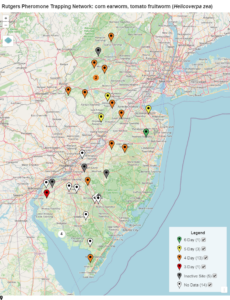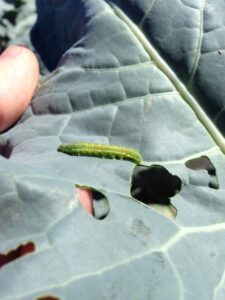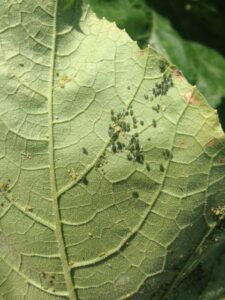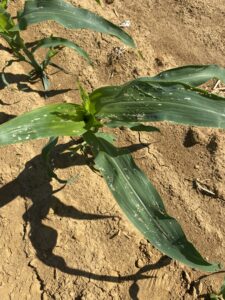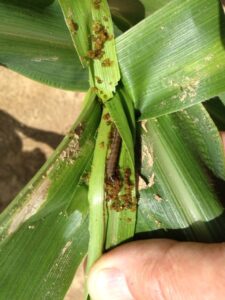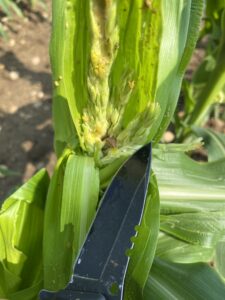Corn Earworm Monitoring – Moving Forward
It is likely that blacklight trapping will not be continued in the Rutgers Vegetable IPM Program beginning in 2025, due to the unavailability of the specific bulb that has been the standard for blacklight traps for decades. Under these circumstances, the IPM Program will rely on pheromone trapping to determine levels of important crop pests such as the corn earworm (CEW).
The 30” Hartstack trap (see photo at right by K. Albright of Purdue Univ.), also called the Texas pheromone trap (TPT), which is used in the Rutgers IPM Program, as well as many insect monitoring programs in other states, is the best tool for determining spray intervals on silking sweet corn to limit CEW injury. A number of New Jersey sweet corn growers already have one or more TPTs on the farm, but we encourage all growers of this crop to obtain at least one.
Deploying Traps
The TPT is mounted on ½” rebar set at a height of approximately 4’. The trap is baited with one Hercon Luretape Corn Earworm Lure, available from Great Lakes IPM®. An additional lure is added every two weeks, and the trap should always be deployed directly adjacent to sweet corn expressing fresh silks. This means that the trap should be moved frequently during the season.
Building or Buying Traps
The TPT is relatively simple to manufacture, and the University of Kentucky has posted the plans and parts list for making these traps in the growers’ shops. The UKy site for trap design is: https://entomology.ca.uky.edu/ef010
For those who wish to purchase this trap rather than making their own, TPTs are available from Mike “O” Olsowski in Geneva, NY. Mr. Olsowski has made a number of TPT tops for the Rutgers IPM Program and is willing to make and ship these traps to New Jersey growers. Contact information for Mike “O” Olsowski :
Mike “O” Olsowski
3510 Sutton Rd.
Geneva, NY 14456
Phone: 315-651-5929
Recording Catches
Current silk spray intervals based on corn earworm catches in the 30″ Hartstack trap were developed by the Univ. of Delaware some time ago, and are represented on the following chart, which may be printed and posted in a convenient site on the farm so that growers can record the catch and determine a silk spray schedule. This trap record also includes spaces for other insects for which commercial pheromones are available, including beet armyworm and fall armyworm. Contact information for Rutgers Vegetable IPM Program staff (currently, Amanda Quadrel) is also included on the chart.

